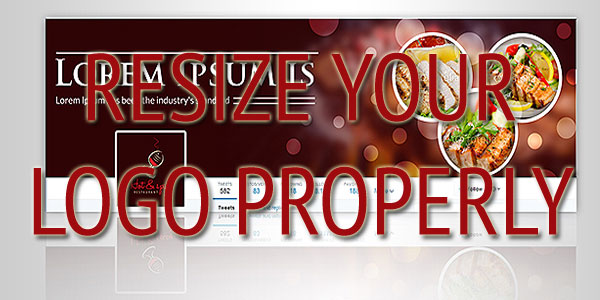 21 Aug 19
21 Aug 19
Resize Your Logo Properly
I'm a logo design designer and I've been working on this profession for years. Although I cannot stop revealing my clients that they should always keep carefully the proportions of their logo when they resize it, I nonetheless look at dozens who don't listen to my advice.
You should never transform the width or your emblem without changing the height than it in the same proportions.
Have you any idea why?
Because if you resize your logo design without following proportions, it will look uneven and blurred.
This may definitely not sound like a big deal but it provides big bad impression to all or any your clients. If they come to your website and see a logo it doesn't look right they'll assume that you didn't retain the services of a good artist or which you don't care good enough about your organization.
I have seen hundreds of awesome logos that acquired extremely ugly because they were resized in the wrong manner. Whenever a twitter logo banner is creating a logo he takes a significant amount of time and energy to create a shape and size that will take full advantage of the custom logo. How comes someone resizes it differently and throw everything that work down the drill?
Here's my guidance, when you have to resize a brand, do it the proper way, keep its proportions. In the event you don't know how to do it, basically contact your designer and simply tell him you must put your logo right into a certain space, he'll surely have the ability to give you a hand and offer the brand in the exact size you need.
Catherine can be an experienced logo designer who has ended up working in the for over a decade, she has made literally a large number of logos and is well known for her capability to get the client's perspective and turn it into art: cheap logo design.
The Value in Hiring an Experienced Graphic Designer
A graphic designer works out to provide businesses with any aesthetic communications they may require.
This includes company logo, layout design and style for printed items such as signage, stationery, and marketing resources (brochures, flyers and so forth) for example.
In today's Internet age a visual designer is frequently also in a position to design electronic communications such as for example e-newsletters, websites and more.
Not all graphic artists cover all assistance areas mentioned, however an experienced and experienced graphic designer will probably be worth their fat in gold.
Hiring a graphic designer who has a few years of experience dealing with business owners to create memorable visual communications has some distinct advantages over working with newer designers.
These Include to mention just a couple
** Rate & Efficiency - An experienced designer is frequently used to working on many different assignments at once; handling their time effectively, and delivering your project to agreed timescales.
If you're hiring your custom with an hourly rate basis rather than getting quoted 'for the employment' a skilled developer quoting you a higher rate per hour might actually expenses you for much less by the end of the project if they are quicker when compared to a custom quoting less each hour.
It's always good to get an estimate from your designer concerning just how long they expect the task to take, as well as better try to encourage them to offer 'for the work' it doesn't matter how long it requires them. Do not forget to talk to if revisions will be included in the 'for the work' price.
** Printing Pitfalls - There are many print layout style pitfalls a custom can fall into if they don't know their trade inside of out. These include;
Print Bleed: Any document organized for print will need to have a few mm's of bleed overlapping the edge of the record dimension (i.e. the developers document should be bigger than the actual printed thing) - each banner de twitter firm includes a different requirement for just how many mm's that should be. An experienced graphic designer will appreciate the necessity to learn before they commence designing, and preferably be proactive plenty to get touching the print organization themselves to find out.
Not offering correct dpi for images: Everyone knows that if you are offering a printing firm an image sort that is made up of pixels such as for example TIFF or JPEG, which the image must be at the least 300 dpi (dots per inches).... or perform they all know this? Is your designer aware of this?
Likewise if you are offering the print company a vector graphic such as for example EPS, or AI.... that pixels will be unimportant because scalable vector pictures output by specialized design software, aren't made up of pixels.


Comments